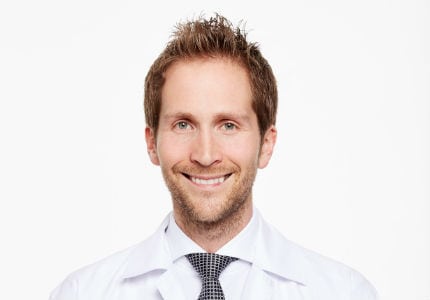Our mission at Podimedic is first and foremost to offer a professional and quality service by keeping patients our priority. Thus, our primary goal is to treat each patient as we would a family member. That's why we take the time to answer their questions, develop a personalized treatment plan and provide the necessary tools for each patient.
Our philisophy is to always stay at the forefront of emerging and cutting edge technology. We constantly renew our equipment in order to be up to date with the latest breakthroughs in the field. Moreover, at Podimédic, we are not satisfied with the status quo! This is why our podiatrists always stay up to date by participating in continuous training to deepen their knowledge in their field of expertise.
We aim for innovation by participating in research and development projects in order to increase our knowledge within our field to better help the population.
Finally, communication is also our main priority. Our goal is to provide useful and effective tools to increase knowledge about foot health. Our website, blog and newsletters are great ways to educate yourself about the different problems associated with feet.

Podiatrist at Anjou and Bromont clinics
Co-founder of the Podimédic Clinics

Podiatrist at Lachine and Bromont clinics
Co-founder of the Podimédic Clinics
Privacy Officer
Union of the two branches under the Podimedic banner
Expansion of the premises at the Lachine branch
Integration of nurses specializing in foot care at the two branches
Opening of the orthotics manufacturing laboratory at the Anjou branch
Chiropractors begin working at the clinics
Integration of a German technology at the clinics for the analysis of plantar pressures which is inserted directly into shoes, this is a first for Quebec
Opening of the Lachine Podiatry Clinic
Opening of the Anjou Podiatry Clinic
What’s a Podiatrist, Anyway?
A podiatrist is the health professional who evaluates and treats foot conditions that are not related to system diseases. The scope of practice of a podiatrist therefore extends to more than one field.
These include:
Foot orthopedic disorders:
- Flat feet, hollow foot (high- arched foot), hallux valgus (bunions), hammer toes, tendonitis, bursitis, heel pain, fractures, arthritis, sprains and much more.
- Skin disorders (dermatological).
- Calluses, corns, dermatitis, cysts, wounds, etc.
Infectious diseases:
- Plantar warts, athlete’s foot, mycotic nails and ingrown toenails.
Medical imaging:
- Radiography and diagnostic ultrasound.
It is after assessing the vascular, neurological, dermatological and orthopedic conditions of the feet that the podiatrist can establish a treatment plan that will be adapted according to the condition of the patient.
The medical procedures frequently used by podiatrists include:
- Foot care (nail clipping and surgical resection of calluses)
- Prescribing certain medications
- Minor surgeries (ingrown toenails, resection of cysts, biopsies)
- Anesthetic injections
- Cortisone injections
- Viscosupplementation injections
- Prescribing and manufacturing custom-made foot orthotics
Manual Therapy
- Therapeutic taping
- Debridement and dressings for diabetic wounds
The academic journey to become a podiatrist is similar to that of a dentist. Therefore, the podiatrist must hold a Ph.D. degree in podiatric medicine in order to be qualified under this title. This training represents 1,700 hours of theory and more than 2,300 hours of practice.
Thereafter, the podiatrist must obtain a license to practice podiatric medicine issued by the Ordre des podiatres du Québec. The Podiatrist must comply with several quality standards and regulations such as professional inspections and continuous training, which is not the case for non-professionals.

